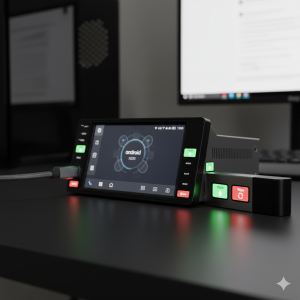When updating the firmware on your Android car stereo or any embedded device, you will encounter two distinct types of files, even if you use the same **USB stick** to apply them. The difference lies in what the file contains and the action it executes on your system.
It is essential to understand this distinction to choose the correct procedure and avoid losing your data or, worse, « bricking » your device.
1. The USB-Applied « OTA » Update (The Incremental Patch)
In this context, the term **OTA** (Over-The-Air, even if manually delivered via USB) refers to the **action** of the update, not the distribution method. Many manufacturers provide incremental updates as files to be placed on a USB stick.
| Characteristic | Detail |
|---|---|
| File Name | Often a small file (a few MB), sometimes called « Update.zip » or « Patch. » |
| Action | This is an **incremental** or **differential** update (a patch). It contains only the changes and new files between your current version and the new one. |
| Impact on Data | **User data, applications, and settings are retained.** |
| Risk | **Low.** The update is fast and targets only the necessary files. |
The key point: This type of update **will not fix** deep system issues or file corruption because it only *updates* existing files. If your system is already unstable, a USB-applied patch might not be enough.
2. The « DUMP Flash » (The Full Flash)
The **DUMP Flash** (or **Full Flash** / **Big Package**) is the drastic procedure. It\’s the system\’s return to its foundation.
| Characteristic | Detail |
|---|---|
| File Name | A **very large** file (several GB), containing the entire operating system image. |
| Action | **Wipes** the entire firmware partition and **rewrites** the complete system image, including the Android core and low-level drivers. |
| Impact on Data | **Complete erasure.** The device returns to its factory state. All settings, installed apps, and data are **lost**. |
| Risk | **High.** This is a critical operation. A power failure or an incorrect file can damage the bootloader and render the device unusable (*bricked*). |
The key point: DUMP Flash ensures a clean system free of residual bugs but requires **prior backup** and **absolute verification** of file compatibility.
When to Choose Which?
| Problem | Recommended Solution | Rationale |
|---|---|---|
| « I just want the latest ZLink version. » | USB OTA (Patch File) | Incremental update: fast and retains your settings. |
| « My system keeps crashing and rebooting. » | DUMP Flash (Full) | Instability is often due to corrupted system files. Only a full flash guarantees a clean system. |
| « I’ve changed my MCU board or resolution. » | DUMP Flash (Full) | Requires rewriting the low-level drivers for the new hardware. |
Those details are not mandatory. Each system works differently and could be flashed easily or with more diffculty. Some devices allow flashing SCREEN RESOLUTION configuration from USB, when others need a full flash of the ROM. If you need some help about how to flash, learn about our tutorials here.
⚠️ Expert Warning
Regardless of the type of update you perform via USB, never forget to verify your **MCU version** and your exact **screen resolution**. These two specifications are the most critical, and an incompatible file almost always leads to device failure.
Do you primarily use incremental updates, or have you ever had to resort to a DUMP Flash to resolve an issue?

